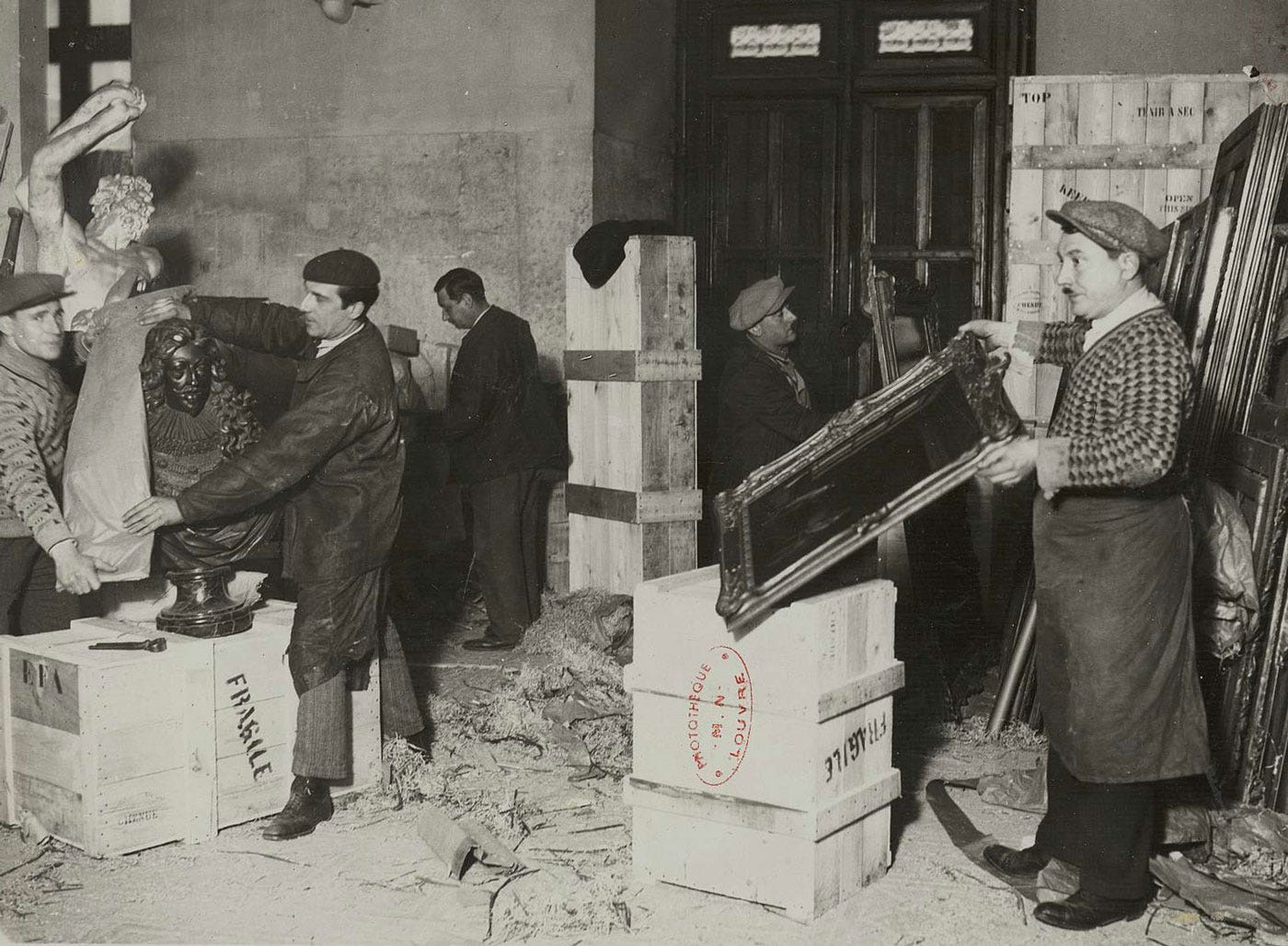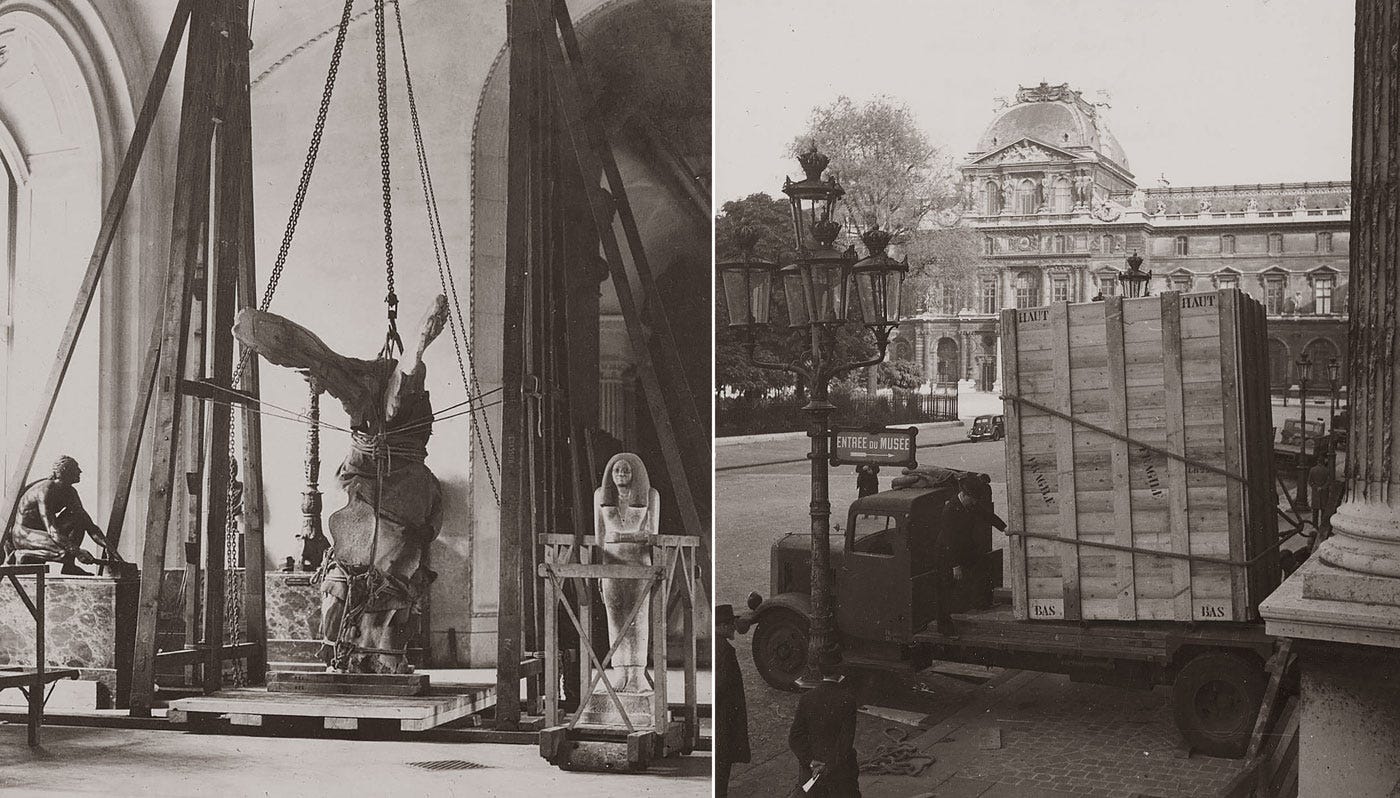Jacques Jaujard, the quiet hero who organized the largest art rescue operation ever.
When real-life heroes are more fascinating than in the movies.
Dear reader, people often see art historians as sedate, bookish people. That may be true, but steel can be behind the smooth exterior. One example we already met is Rose Valland, who saw the Nazis take over her museum and decided to save the beauty of the world by spying right under Goering's nose.
Here, we discuss Jacques Jaujard, the Louvre director during the Second World War. That is why we now enter the time machine and set it to Paris in the summer of 1939.
A few years earlier, a failed artist was elected Chancellor in Germany, quickly extinguishing democracy. Hitler wanted revenge on the world for not having been recognized as a genius and blamed Jews and Communists for his failures.
He forgot that the one person who gave him a chance as a struggling artist was a Jewish picture frame dealer. The merchant purchased his watercolors, giving him a lifeline when no one else did.
As soon as they were in power, the Nazis purged museums and universities and burnt paintings Hitler did not like. In Spain, Franco's Fascists bombed the Prado Museum.
They did not succeed at torching it, and an international team of art historians succeeded at removing its artistic treasures from Madrid to Switzerland.
One of the experts organizing in that effort was Jacques Jaujard.
A long history of threats to the Louvre museum
The first time the Louvre had to be emptied of its treasures was in 1871, as the Prussian army bombed and invaded Paris.
The second time was the First World War. The Germans did not enter Paris but bombed it, so the Louvre was once more evacuated. German planes tried to set fire to Notre Dame cathedral. Fortunately, both the Louvre and Notre Dame survived.
Preparing to save the Louvre
Aside from saving the Prado museum treasures, Jaujard had already ordered the evacuation of the Louvre in 1938. It was a false alert, and everything returned. So, dear reader, let's put ourselves in the seat of a museum director in the summer of 1939.
Today, shipping a painting or sculpture from a museum takes months. After close studies, a special box is built, and a specialist team, accompanied by a curator, stays with the masterpiece during its transport.
Imagine, then, the task ahead when you are not just trying to save the Louvre, the world's largest museum. Jacques Jaujard was in charge of French museums and had to organize the rescue of the contents of the Louvre and two hundred other museums.
That implied drawing lists of artworks by order of importance, what can be moved and cannot, and requisitioning people, trucks, and packing material. The clock was ticking, as there were only a few weeks before the declaration of war.
We tend to think we will be heroes, but we don't know what choice to make when the time comes. I must confess that if I were put under the same pressure as Jaujard, I probably would have a stress-induced heart attack.
That is where steely nerves and determination were required.
Emptying the Louvre before the war even started
Curators, museum guards, employees from a nearby department store, and Louvre School students were tasked to pack artworks into thousands of crates. Then, they carried these to lorries waiting in the Louvre courtyard. They were not specialists but private removal companies that had been requisitioned.
Many of the drivers had never driven outside Paris. They carried priceless treasures, often too big to fit under bridges or cables. Sometimes, they had to drive at night.
Their destination? Castles in the countryside, as far as possible from the battlefield. What happened there will be the second part of this story.
There are only ten days before the war is declared, but packing material is lacking, and the danger is getting closer.
The last masterpieces leave the Louvre just as war is declared
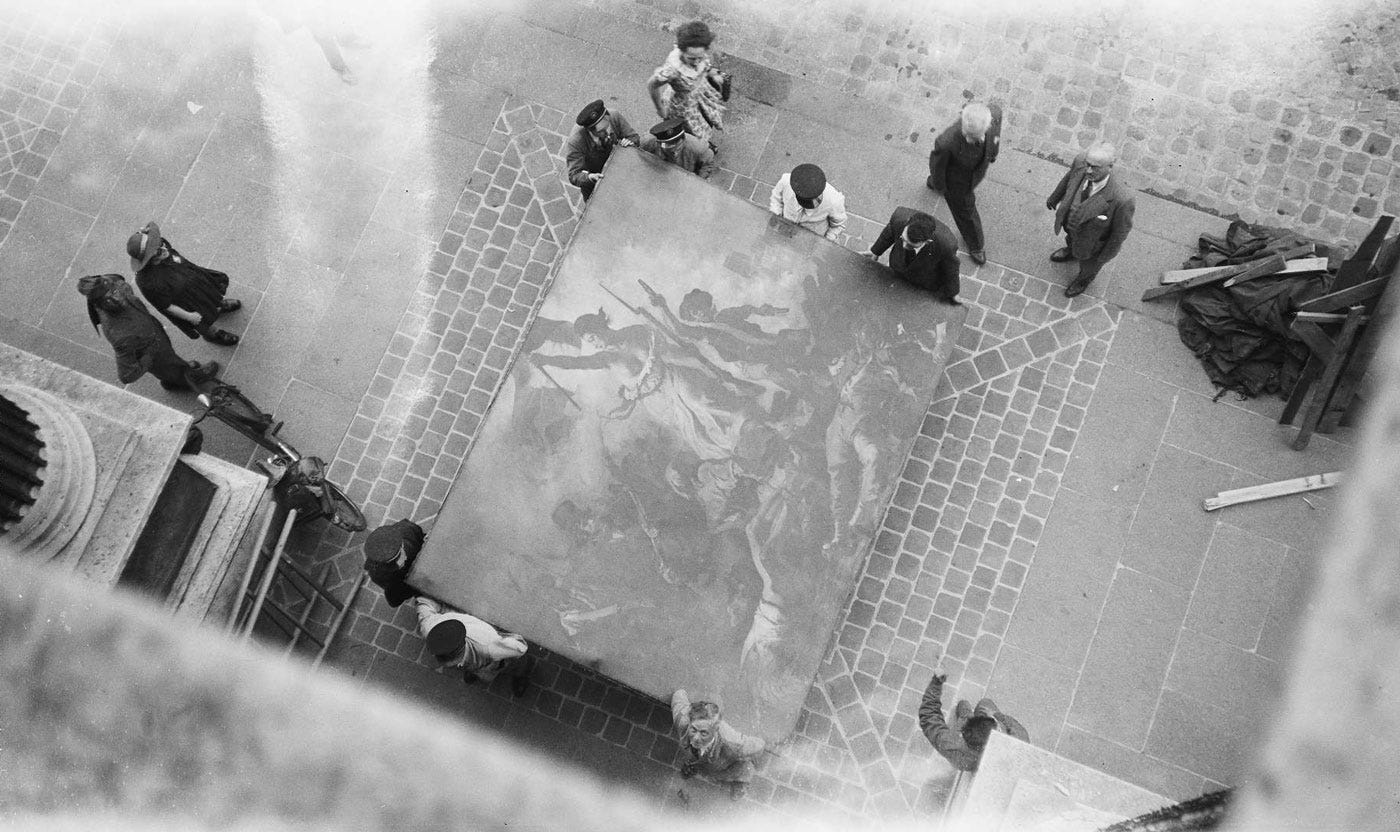
About 3,700 pictures left the museum, but no time or packing material was left for the large-scale paintings. As visible in the photo above, masterpieces were piled next to each other on lorries. The Victory of Samothrace visited the countryside just as the Germans invaded Poland.
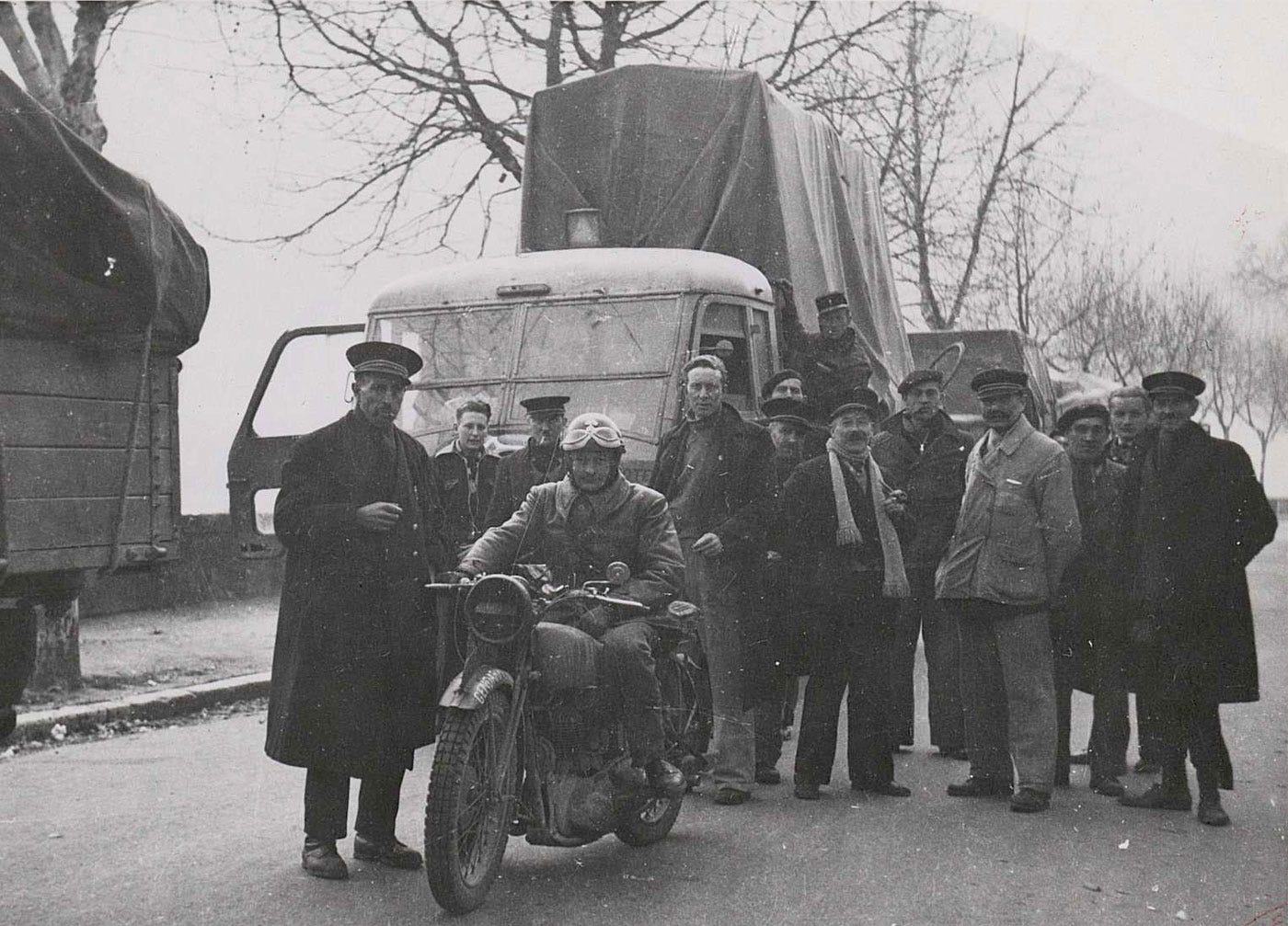
In weeks, one-third of the contents of French museums were shipped to safety. That was the most extensive art rescue operation ever organized, and nothing was lost or damaged.
Jacques Jaujard stayed in the Louvre, now under occupation.
How many times can you say no to German occupation forces?

Remember, dear reader, this is not Hollywood but reality. The Germans are here, and the French government's policy is to collaborate with the enemy. You live and sleep in the Louvre, in the director's apartment. You must smile and shake hands with the German army top brass during the daytime.
The Germans requisition three rooms of the museum. You can protest all you want; they are the occupying forces. In those three rooms with direct access to the street, they store art collections stolen from Jewish families. They even slashed their portraits before torching them in the garden nearby.
A German art historian helped save the Louvre
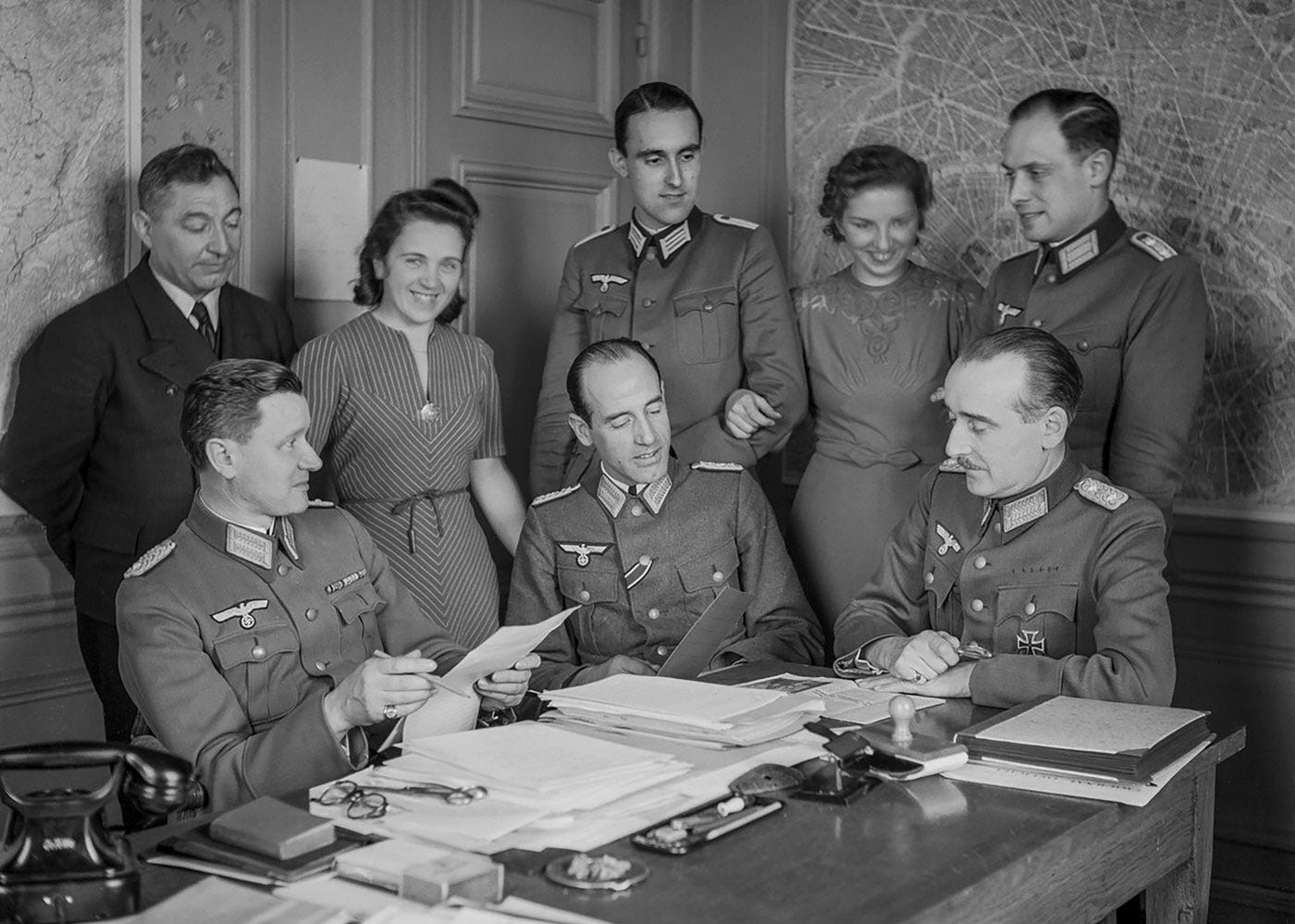
Real-world heroes are different from movie heroes; they can even wear German uniforms. While Hitler and Goering competed to steal private art collections, one German service was tasked with safeguarding cultural heritage. Its director, Count Wolff Metternich, wore a German uniform but was not a Nazi.
Metternich put a big grain of sand in the Nazi theft machine: he used Hitler's orders that no artwork be moved to prevent museum masterpieces from being sent to Germany. He also said to Goering's face that he disagreed with the wholesale looting of private art collections. He helped Jaujard and saved the Louvre staff from the Gestapo whenever possible.
Metternich was sacked for being too close to French curators and refusing to help steal masterpieces. After the war, he received the Legion of Honor in recognition for helping save French museum treasures. That's where the real world is more complicated than in the movies: Jaujard had a German ally and a French enemy.
His minister was an ardent supporter of the Nazi cause who agreed to send museum treasures to Germany. Given half a chance, he would also send Jaujard along. Imagine the balancing act: your government collaborates with the Nazis. If sacked, it would be impossible to keep protecting museums.
The minister did try to push Jaujard out, but after being told that all the staff would resign in protest, he backed down. Of course, he did not want to inform the Allies of the location of the museum treasures hidden all over the French countryside.
Jaujard, an active member of the Resistance, informed the Allies so that they could avoid bombing the castles where masterpieces were stored.
Resistance in the Louvre
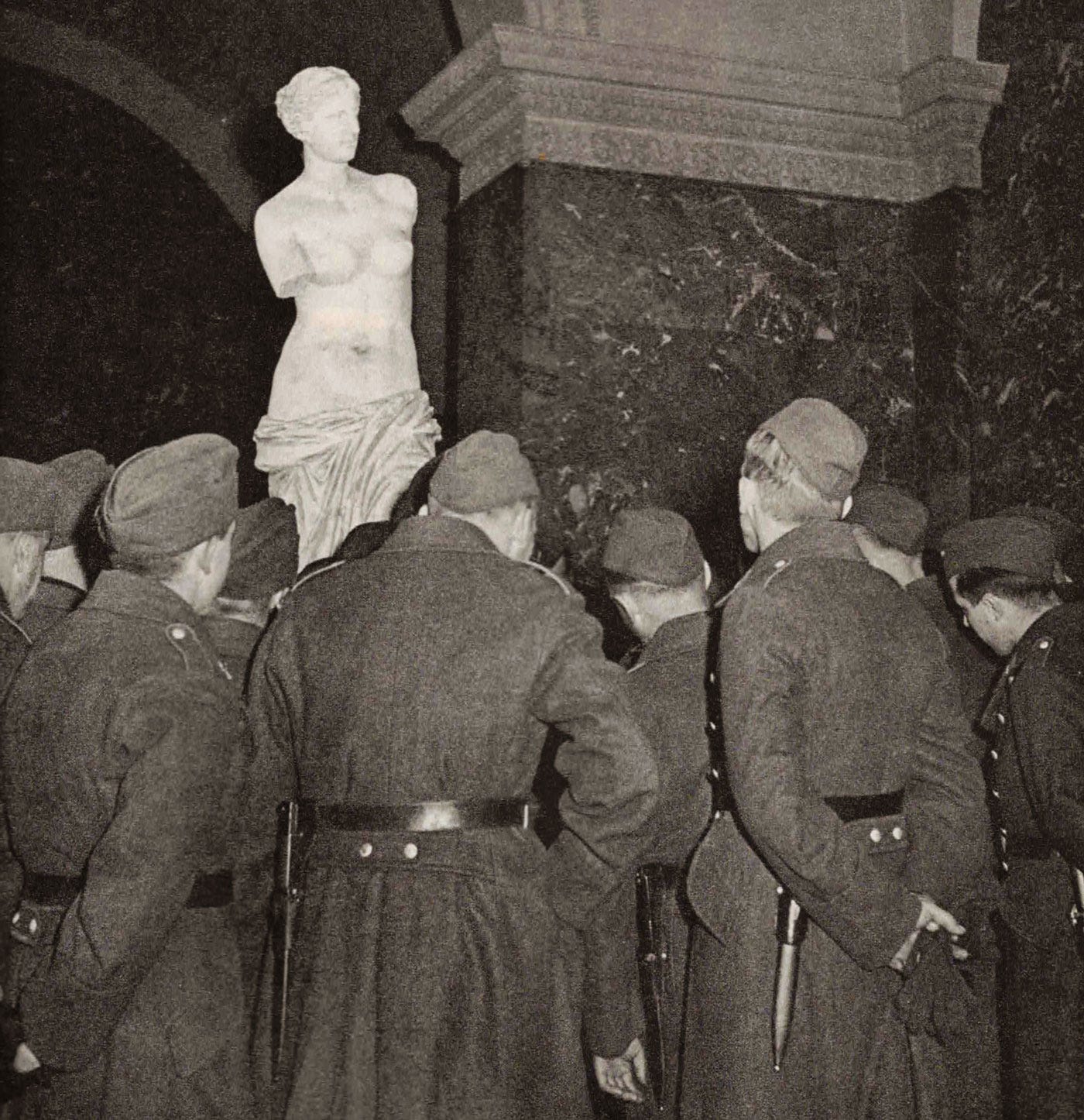
Jaujard resisted against his own government, as did the Germans. He took care of people, not just art, protecting Jewish employees, hiding, in his Louvre official residence, weapons and members of the Resistance hiding from the Gestapo.
For four years, every few days, Jaujard or his assistant received Rose Valland, who spied at the Jeu de Paume to record the Nazi theft of private art collections. Had one of them been caught with German documents, they all would have been killed.
The Louvre still bears scars from the Second World War
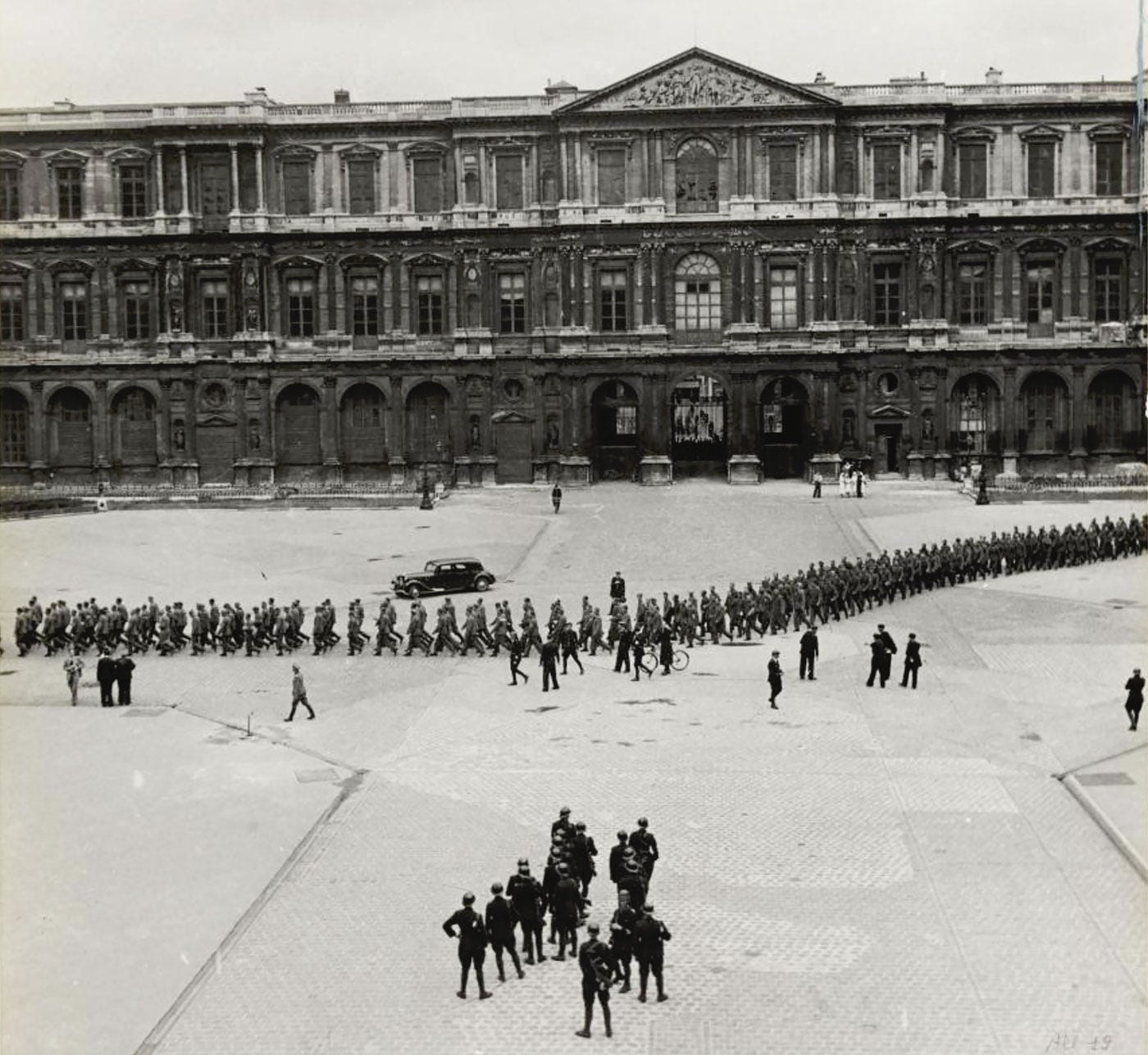
The wounds may be barely visible, but they are there for one who looks. In 1943, a British bomber plane was shot down by the Germans and crashed next to the Louvre. Its pilot landed on the museum's roof, and a service was organized inside the Louvre courtyard in memory of the seven British and Canadian soldiers.
During the Liberation of Paris, Jaujard ordered curators to be in the Louvre day and night. From the museum windows, they saw the gunfights, bullets piercing windows; one of them nearly hit Jaujard.
The Louvre then became an open-air prison for hundreds of German soldiers, who broke inside the museum, fearing the Parisians would lynch them. Like Notre Dame cathedral, the Louvre was in the middle of gunfights during the liberation of Paris in 1944 and still bears bullet marks.
Jacques Jaujard, an unassuming hero
Discreet during and after the war, Jacques Jaujard never wrote about his memories or tried to brag about his accomplishments. No Hollywood movie glorifies his story.
For the first time, here is the translation of his nomination to Commander of the Legion of Honor, explaining why he should receive it:
In 1939, he organized the total evacuation of French museums and a large number of private collections, arguably the largest migration of works of art of all time.
Ensured that French artistic heritage was sheltered during the six years of war, from which it emerged intact, despite the risks involved.
Until the Liberation, he waged a relentless struggle against the enemy and a complicit government to preserve the national heritage intact.
Meanwhile, he prevented a large number of workers from being sent to Germany and protected Resistance fighters wanted by the Gestapo from police pursuit.
While he did indeed receive honors in his lifetime, how was the man who organized the largest migration of works of art of all time treated in old age? Jaujard had no intention of stopping working in the culture ministry. One day, he entered his office and found someone else sitting in his chair.
Believing his minister's promise that another post was coming soon, he sat by the phone for months. The call never came, and Jacques Jaujard finally understood he was unnecessary. He resigned and died not long after, brokenhearted.
Realizing his mistake, the minister had one of the doors of the Louvre named 'Porte Jaujard.'
Dear reader, you probably know from the movies of the Monuments Men and, hopefully, about Rose Valland, the Art Spy. What about the man who saved the largest number of artworks in history, Jacques Jaujard?
I trust that this small attempt at telling that story was a Moment of Wonder. Soon, there will be the story of another hero who stopped Nazis from burning the Venus of Milo and other artistic treasures.
Sources
Christiane Desroches-Noblecourt, "Un très grand directeur : Jacques Jaujard"; Pillages et restitutions. Le destin des œuvres d'art sorties de France.
How Jacques Jaujard Saved The Louvre From Nazis.
Rose Valland: Art Historian Turned Spy To Save Art From Nazis.
Nazis stealing & destroying memories.
The Story Of The Venus De Milo.






